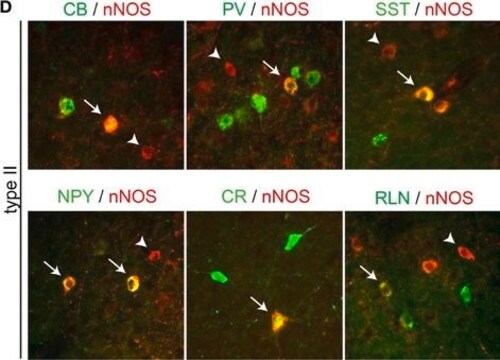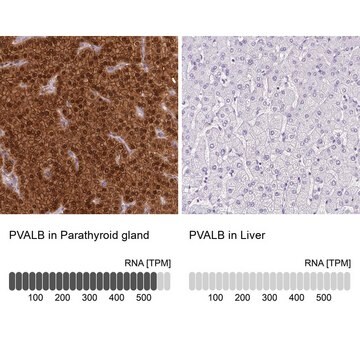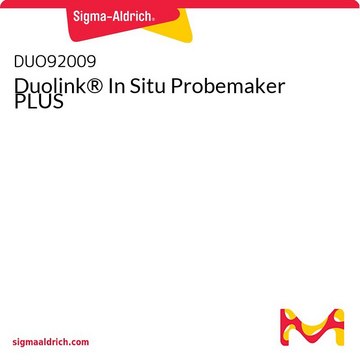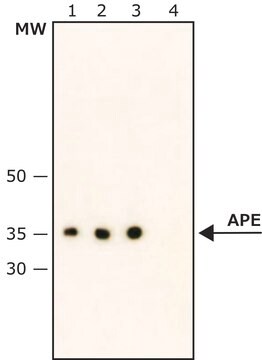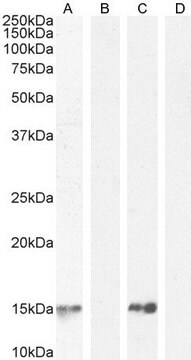Wichtige Dokumente
SAB4200545
Anti-Parvalbumin antibody, Mouse monoclonal
clone PARV-19, purified from hybridoma cell culture
Synonym(e):
Monoclonal Anti-ALPHA-PARVALBUMIN, Monoclonal Anti-PALB1, Monoclonal Anti-PV, Monoclonal Anti-PVALB (includes EG:19293), Monoclonal Anti-Parv, Monoclonal Anti-Pva
About This Item
Empfohlene Produkte
Biologische Quelle
mouse
Qualitätsniveau
Konjugat
unconjugated
Antikörperform
purified from hybridoma cell culture
Antikörper-Produkttyp
primary antibodies
Klon
PARV-19, monoclonal
Form
buffered aqueous solution
Mol-Gew.
antigen 12 kDa
Speziesreaktivität
rat, human
Konzentration
~1.0 mg/mL
Methode(n)
immunohistochemistry: 5-10 μg/mL using formalin-fixed paraffin embedded rat cerebellum.
indirect immunofluorescence: 10-20 μg/mL using BLO-11 cells.
western blot: 1-2 μg/mL using mouse muscle extracts.
Isotyp
IgG1
Versandbedingung
dry ice
Lagertemp.
−20°C
Posttranslationale Modifikation Target
unmodified
Angaben zum Gen
human ... PVALB(5816)
rat ... PVALB(25269)
Allgemeine Beschreibung
Spezifität
Immunogen
Anwendung
- immunohistochemistry
- immunofluorescence staining
- immunolabeling
- to label brain slices for perineuronal net staining
- enzyme-linked immunosorbent assay (ELISA)
- immunocytochemistry
Western Blotting (1 paper)
Biochem./physiol. Wirkung
Physikalische Form
Lagerung und Haltbarkeit
Haftungsausschluss
Sie haben nicht das passende Produkt gefunden?
Probieren Sie unser Produkt-Auswahlhilfe. aus.
Lagerklassenschlüssel
10 - Combustible liquids
Flammpunkt (°F)
Not applicable
Flammpunkt (°C)
Not applicable
Hier finden Sie alle aktuellen Versionen:
Besitzen Sie dieses Produkt bereits?
In der Dokumentenbibliothek finden Sie die Dokumentation zu den Produkten, die Sie kürzlich erworben haben.
Kunden haben sich ebenfalls angesehen
Unser Team von Wissenschaftlern verfügt über Erfahrung in allen Forschungsbereichen einschließlich Life Science, Materialwissenschaften, chemischer Synthese, Chromatographie, Analytik und vielen mehr..
Setzen Sie sich mit dem technischen Dienst in Verbindung.
